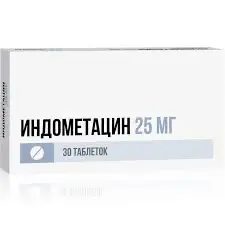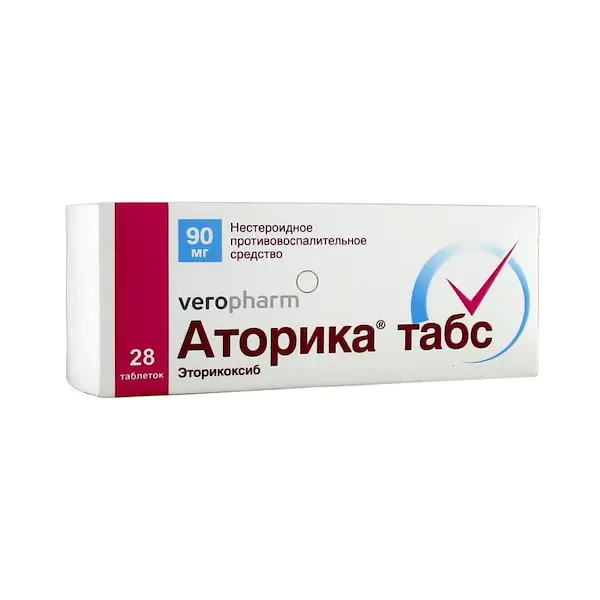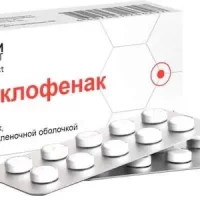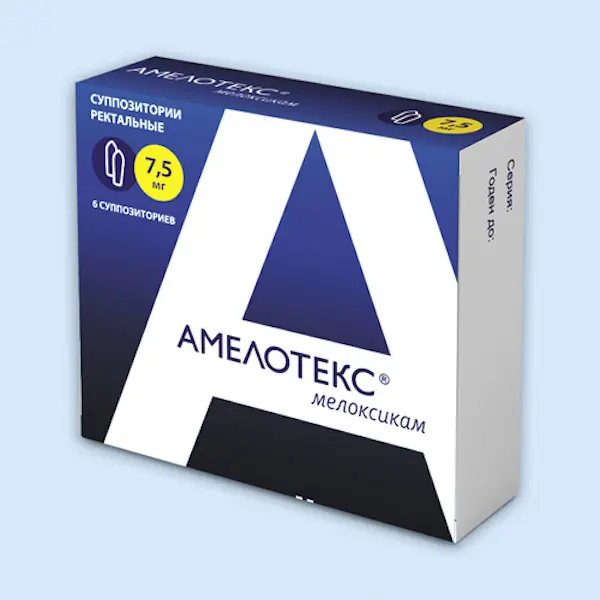Description
Indomethacin Pharmacodynamics
Indomethacin has anti-inflammatory, analgesic, antipyretic and anti-aggregation effects. Inhibits the activity of pro-inflammatory factors, reduces platelet aggregation. Inhibiting cyclooxygenase I and II, disrupts arachidonic acid metabolism, reduces the amount of prostaglandins (Pg) both in the inflammation focus, and in healthy tissues, inhibits exudative and proliferative phases of inflammation. Eliminates or reduces pain syndrome of rheumatic and non-rheumatic nature (including joint pain at rest and on movement, reduction of morning stiffness and joint swelling, helps to increase range of motion; in inflammatory processes following operations and injuries; quickly relieves both spontaneous pain and pain on movement; reduces inflammatory swelling of the wound site).
Indications
– Acute and chronic pain in inflammatory diseases of the musculoskeletal system: rheumatoid arthritis, juvenile chronic arthritis, ankylosing chronic spondylitis (Behterev’s disease), gouty arthritis, psoriatic arthritis, Reiter’s disease;
– periarticular tissue diseases: tendinitis, bursitis, tendobursitis, tendovaginitis;
– Traumas in athletes;
– Discopathies, neuritis, plexitis, radiculoneuritis.
The drug is intended for symptomatic therapy, reduces pain and inflammation at the time of use, does not affect the progression of the disease.
Contraindications
– Hypersensitivity to indomethacin or any of the excipients of the drug;
– anamnestic evidence of an attack of bronchoobstruction, rhinitis, urticaria after taking acetylsalicylic acid or other NSAIDs (complete or incomplete acetylsalicylic acid intolerance syndrome – rhinosinusitis, urticaria, nasal polyps, asthma);
– erosive-ulcerative changes of the mucosa of the stomach or 12 duodenum, active gastrointestinal bleeding;
– inflammatory bowel diseases (nonspecific ulcerative colitis, Crohn’s disease);
– congenital heart defects (severe coarctation of the aorta, pulmonary atresia, severe tetrada Fallo);
– period after aortocoronary bypass surgery;
– decompensated heart failure;
– renal insufficiency (creatinine clearance (CK) less than 30 ml/min), advanced renal disease;
– hepatic insufficiency or active liver disease;
– blood clotting disorders (including hemophilia, prolonged bleeding time, susceptibility to bleeding);
– hematopoiesis disorders (leukopenia and anemia);
– confirmed hyperkalemia;
– hereditary lactose intolerance, lactase deficiency and glucose-galactose malabsorption;
– pregnancy and breastfeeding;
– Childhood (under 14 years).
Dosage and administration
- Orally, after a meal with plenty of water.
- Adults and children over 14 years of age: the initial dose is 25 mg 2-3 times per day. In case of insufficient therapeutic effect, the dose is increased to 50 mg 3 times a day. The maximum daily dose is 200 mg. In long-term treatment, the daily dose should not exceed 75 mg.
- Gouty arthritis
- To relieve an acute attack of gout, the initial dosage is 100 mg, then continue treatment 50 mg 3 times a day until the pain disappears. Side effects can be reduced by using the lowest effective dose for the shortest time possible.





